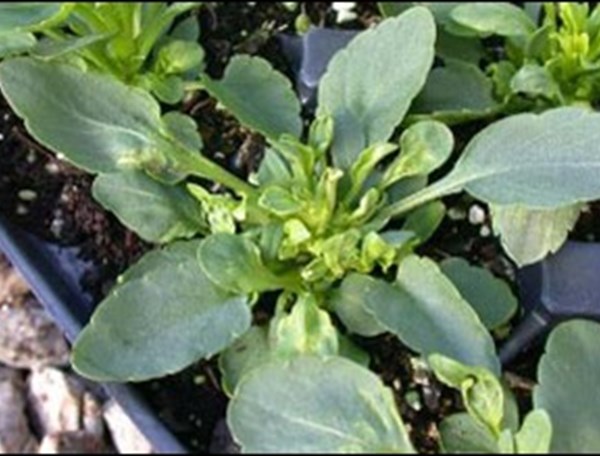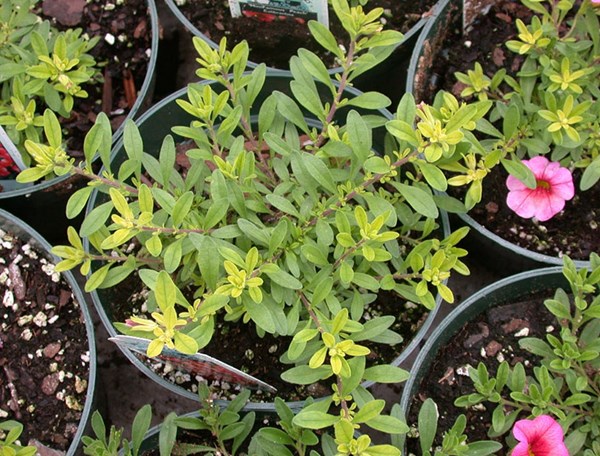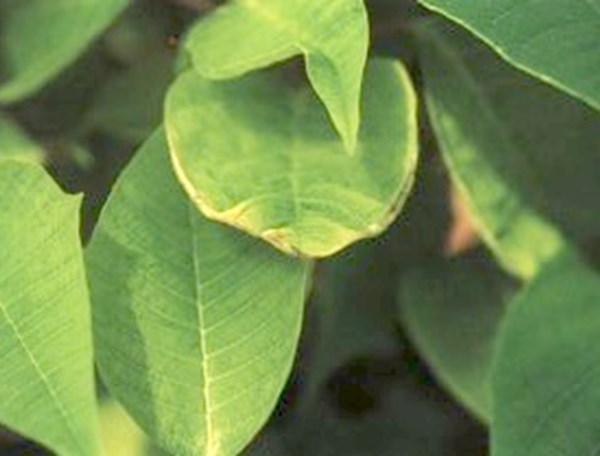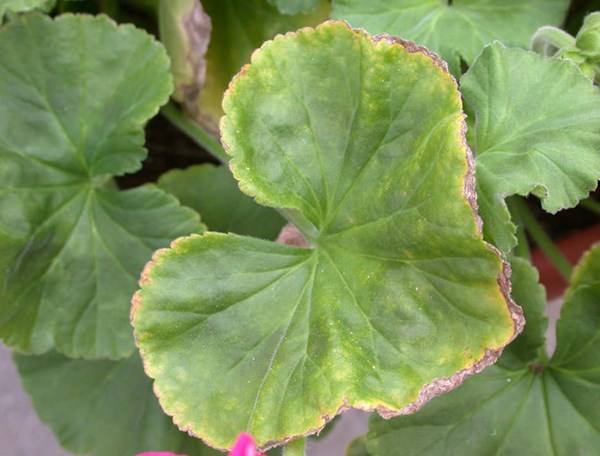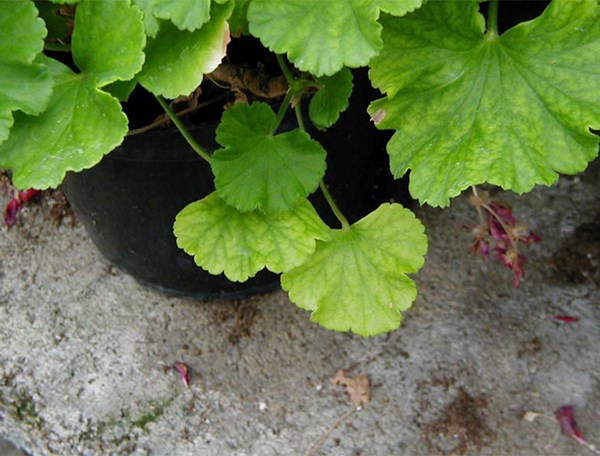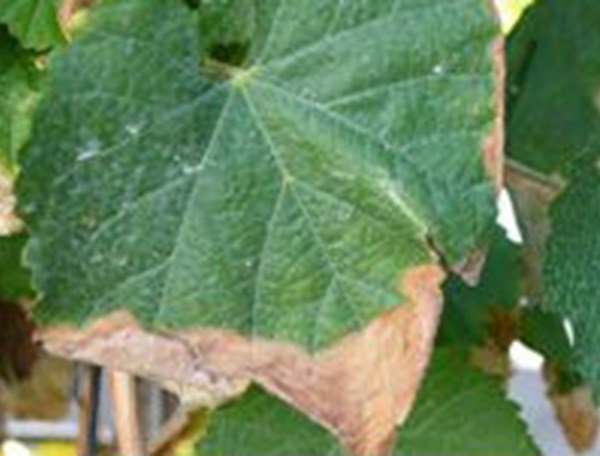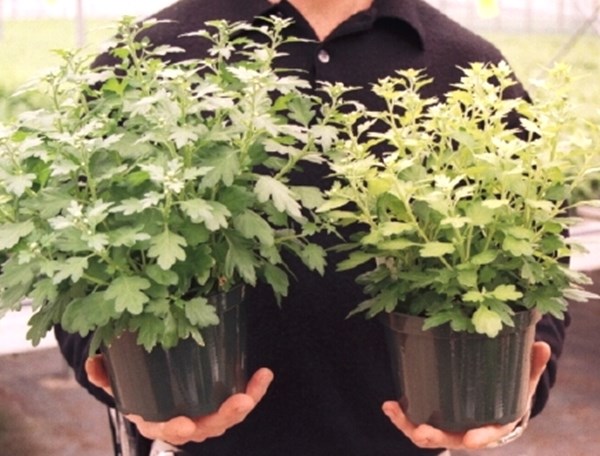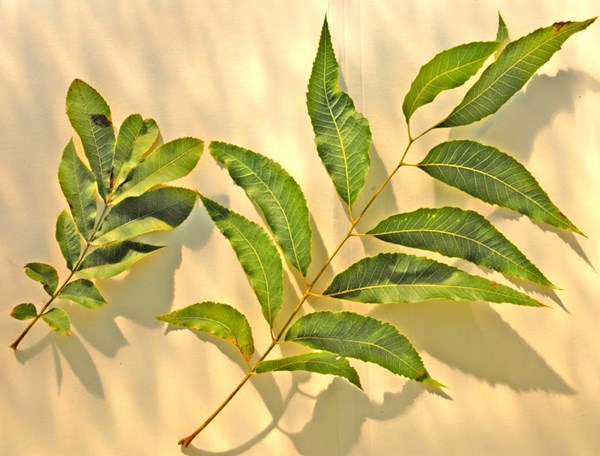Training Center
Role of Silicon in Plant Culture
Thursday, September 7, 2023 | Ed Bloodnick
Essential elements are nutrients without which plants cannot complete their lifecycle. Among others, those include nitrogen, phosphorus and potassium. But, there are also non-essential elements that provide certain benefits to some plants. Silicon, which we'll look at in this article, is one of them.
Silicon is the second most abundant element in the earth’s crust and is found in significant quantities in the soil; however, silicon can only be taken up by the plant in the form of mono-silicic acid. Most dicots (broad leaf plants) take up small quantities of silicon and accumulate less than 0.5% in their tissue. Some monocots (grasses) such as rice and other wetland grasses accumulate up to 5-10% silicon in their tissue, which is higher than normal ranges for nitrogen or potassium.
Function of Silicon
Silicon seems to benefit certain plants when they are under stress. It has been found to improve drought tolerance and delay wilting in certain crops where irrigation is withheld and may enhance the plant’s ability to resist micronutrient and other metal toxicities (i.e. aluminum, copper, iron, manganese, zinc, etc.). Also, silicon has been found to help increase stem strength. For example, research found when rice and wheat are silicon deficient, their stems weaken and easily collapse in wind or rain (a condition called lodging); poinsettias treated with silicon have shown reduced stem breakage. Silicon has been found to increase certain plant species resistance to fungal pathogen attack. In the case of powdery mildew and phytophthora, disease attack was delayed in silicon treated zinnia, rose, sunflower, cucumber (all powdery mildew) and gerbera (phytophthora), but after 1-3 weeks both silicon treated and untreated plants had the same amount of disease. The modes of action for most of these benefits are uncertain and more research needs to verify these benefits.
Deficiency
Since silicon is not considered an essential element, most plants will grow normally without it. However a few plants have shown deleterious effects if silicon is withheld. As stated above, rice, wheat and other graminaceous crops exhibit reduced incidence of lodging when silicon is provided. Tomatoes can have abnormal flower development and, along with cucumber and strawberry, have reduced fruit set and possibly malformed fruit. Deficiency of silicon may also increase the potential for manganese, copper or iron toxicity in certain plants.
Toxicity
Although uncommon, excess levels of silicon can possibly compete with uptake of other nutrients. In gerbera and sunflower, high levels of silicon were found to deform flowers. Plants that are considered “non-accumulators” of silicon are more sensitive to excess silicon vs. those that are “accumulators” (see the following table).
|
Accumulator (>1.5% Si) |
Intermediate (1.5-0.5% Si) |
Non-Accumulator (<0.5% Si) |
|
Conifers |
Chrysanthemums |
Begonia |
|
Ferns |
Cucumber |
Geranium |
|
Horestail (Equisetum) |
Marigold |
Gerbera |
|
Mosses |
New Guinea Impatiens |
Pansy |
|
Rice |
Pumpkins |
Petunia |
|
Sugarcane |
Rose |
Snapdragon |
|
|
Squash |
Sunflower |
|
|
Wheat |
Tomato |
|
|
Zinnia |
|
In the above table, plants are categorized based on their tendency to accumulate silicon. “Accumulators” accumulate high levels of silicon in their tissue; “intermediate” accumulate moderate levels and “non-accumulators”, low levels in the tissue. The percentage of silicon that accumulates in the tissue is also listed under each plant category.
Where to Find Silicon?
Silicon is not included in the formulation of most fertilizers, but many contain some as a contaminant. Water sources typically provide silicon as well as the growing medium components and even dust contains useable silicon. Although each source of useable silicon may not provide significant levels for a crop, added together there may be enough silicon to negate the necessity to supplement with a separate silicon fertilizer, especially for non-accumulators.
However if a silicon fertilizer is used, research shows that potassium silicate or calcium silicate can be injected at a constant feed rate of 50 ppm silicon or once per week at a rate of 100 ppm. Do not exceed 200 ppm as it may cause phytotoxicity in some non-accumulators as was seen in gerbera and sunflower. Test the silicon fertilizer on a small percentage of several crops and do a side by side comparison to check for potential phytotoxicity as well as crop benefits. Like other fertilizer elements, silicon needs to be supplied throughout the crop cycle.
Please note silicon fertilizers are very alkaline and greatly increase the pH of the stock solution. This reduces the solubility of micronutrients and silicon can form precipitates in the stock tank. To err on the side of caution, it is best to have separate stock tanks for a silicon fertilizer and your standard fertilizer.
Is Silicon Needed?
The research does show benefits of using silicon with certain agricultural crops (rice, wheat, sugarcane, etc.), especially if grown in poor quality soils; however, there are only limited studies that indicate there may be benefits for greenhouse crops. For the crops tested, there may be benefit of using silicon for intermediate and accumulator plants. For non-accumulators, there is conflicting information as to whether they benefit. For example, tomato, which is a non-accumulator, had increased flowering and fruit set when given additional silicon. However, powdery mildew and nutrient toxicity studies showed there was no significant suppression of either in non-accumulators treated with silicon.
As stated above, crop inputs such as water, fertilizer and growing medium may supply sufficient silicon for non-accumulators and perhaps intermediate accumulators. If not, intermediate accumulators may benefit from additional supplementation with silicon. Unfortunately silicon is not tested by most labs, so it is unknown if a grower’s inputs already provide enough usable silicon to benefit crops.
For more information, contact your Premier Tech Grower Services Representative:
 |
 |
 |
 |
|---|---|---|---|
|
Ed Bloodnick |
Nathan Wallace-Springer |
Lance Lawson |
Victor Brantly |
 |
 |
 |
|
|
Troy Buechel |
Susan Parent |
Jose Chen Lopez |
References:
- Bent, E., 2007 "Silicic acid: Growing as nature intended. Fruit and Vegetable Tech" (7.3):24-26.
- Cavins, T., S. Marek, and S. Kamenidou, 2010 "Silicon enhances disease suppression." GMPro Magazine (12):33-35.
- Frantz, J.M., J.C. Locke and N. Mattson., 2010 "Research update: Does silicon have a role in ornamental crop production?" OFA Bulletin. 924:17-18.
- Frantz, J.M. and J.C. Locke, 2011 "Ready research results: Silicon in floriculture fertility programs." Greenhouse Grower Feb, 2011: 26-27
- Frantz, J.M., S. Khandahar and S. Leisner. 2011. Silicon differentially influences copper toxicity response in silicon-accumulator and non-accumulator species. J. Amer. Hort. Sci. 136:329-338.
- Leatherwood, R. and N. Mattson. Adding silicon to the fertilizer program in poinsettias production: benefits and facts. www.greenhouse.cornell.edu/crops/factsheets/silicon_poinsettia.pdf
- Locke, J. 2007. Silicon boosts yields, disease suppression in media. GMPro Magazine (8):58.
- Newman, J. 2008. Supplementing silicon may yield benefits. GMPro Magazine: (6):74-76.
- White, J. D. 2007. Silicon as a supplement. Growertalks. April 2007:34
PRO-MIX® is a registered trademark of PREMIER HORTICULTURE Ltd.
Related Articles
-
Role of Boron in Plant Culture
Do your plants have a deficiency or a toxicity related to boron? This article will help you better control this micronutrient.
-
This article will help you better understand the role of iron in your plant culture.
-
Role of Calcium in Plant Culture
This article will help you better understand the role of calcium when cultivating plants.
-
Role of Manganese in Plant Culture
Do your plants have a deficiency or a toxicity related to manganese? This article will help you better control this micronutrient.
-
Role of Magnesium in Plant Culture
Do your plants have a deficiency or a toxicity related to magnesium? This article will help you better control this secondary nutrient.
-
Role of Sodium and Chloride in Plant Culture
This article will help you better understand the role of sodium and chloride in your plant culture.
-
Role of Sulfur in Plant Culture
This article will help you better understand the role of sulfur in your plant culture.
-
Role of Nickel in Plant Culture
This article will help you better understand the role of nickel in your plant culture.

 Where to find our products
Where to find our products
